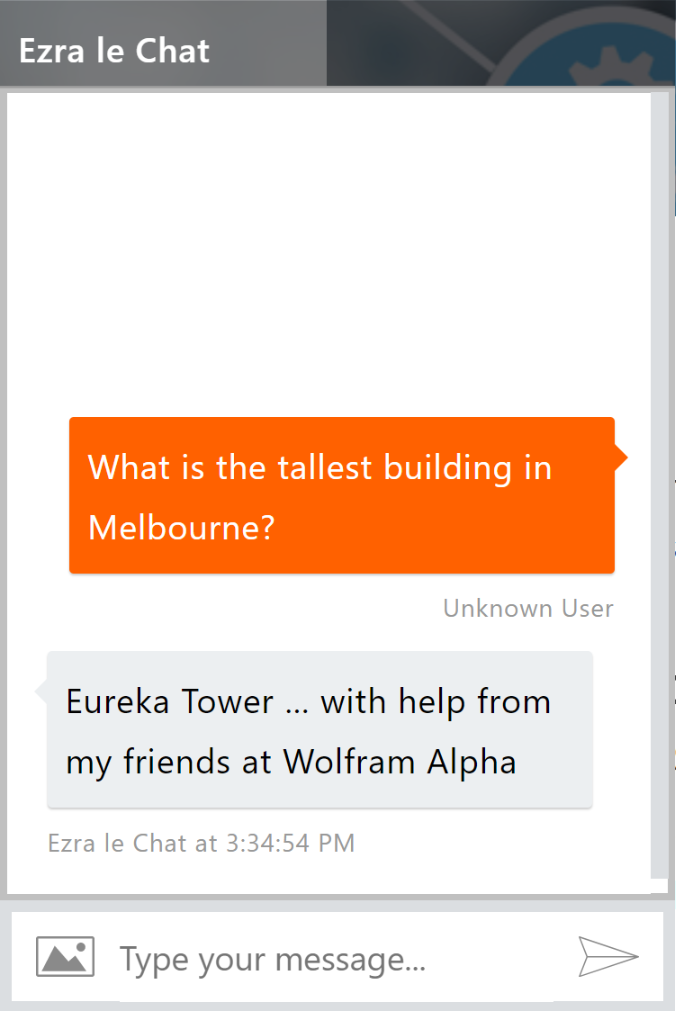Getting Started
Welcome to Loome Assist’s support guide.
This guide covers Loome Assist’s features, helping you through the next steps for getting your bot up and running after installation. You don’t need to use code to build Loome Assist. Loome Assist can be managed and trained by business people, without requiring specialist technical skills.
Scroll down for a snapshot of what you need to bring Loome Assist to life, or delve deeper into the step-by-step functionality of Loome Assist with the navigation menu on the left.
For any extra assistance, or to provide us with some feedback, send an email to info@loomesoftware.com
To see Loome Assist in action, hop on over to our webpage: loomesoftware.com/assist
What can Loome Assist do?
The Loome Assist Chat Bot Accelerator can connect to all corporate and external systems and start helping businesses anticipate the needs of customers and internal staff. Loome Assist can be configured by business users to display the exact information needed, without relying on IT for support.
As a snapshot, Loome Assist is capable of:
Generating and capturing leads by guiding customers to quicker answers through automated processes, eliminating the need to sit on hold or navigate through an entire website. Loome Assist can clearly offer calls-to-action based on the nature of conversation, and capture leads at the point of contact. This can be done by connecting Loome Assist to pull answers from an existing database, or by entering your information into its Knowledge Base manually.
Natural Language Understanding, providing a friendly conversational format. Loome Assist can understand the intent of a question and find an answer using tags in its Knowledge Base. Loome Assist’s answers can be easily refined with continuous feedback.
Giving meaningful insight via an integrated Power BI model, which produces instant data on the most commonly asked questions. Loome Assist then allows a business user to tailor answers according to this conversation history.
Where do I begin?
Some of the best, and simplest, examples of using Loome Assist are: for Staff Directories, Customer Service, and Information Redirection - scenarios that have a high-volume of interactions/traffic and require only simple responses. Loome Assist can field any number of related questions at any time, returning information in a friendly manner from databases or online, providing customers and staff an efficient self-service solution and freeing up resources.
More advanced scenarios can even have Loome Assist handing over Customer Service conversations to real people, complete with analytics on the caller’s sentiment and what products/options would be the best fit to ensure the conversation is a success.
Loome Assist can be very versatile, an advanced digital assistant that can utilise other advanced services or custom programs to drive the solution you want. Feel free to reach out to us and we can discuss how to make your ideas a reality!
Getting Started
Dictionary
The Dictionary is often the place you start when first building Loome Assist. When adding to your Dictionary, have a clear idea of what kind of things Loome Assist is going to be asked about, and the information you want Loome Assist to reply with.
Dictionary words are especially important because they are the tags Loome Assist needs to match user words or statements to - also called user utterances. Dictionary words or phrases need to be given a type: Verb, Query, Noun, Person or Location.

Knowledge Base
Loome Assist’s Knowledge Base is exactly that - a store of information that Loome Assist can retrieve answers from. Each entry is tagged with one or more words from the Dictionary, and the best answer is selected according to a system of tag scoring. This will be explained further in the Knowledge Base section.

Action Flows
Loome Assist has two modes. One is the usual free text Q and A (the user types a question and gets a response) and the other is a wizard based workflow called Action Flows. This second Action Flow mode can feel more like a dialogue, as Loome Assist is the one asking the user questions. Using Action Flows, the business can configure the next thing Loome Assist will say, according to the customer’s responses. Action Flows can look complex in their mapped form, but the user interface allows for a straight forward set up.

Answer Grammar Matrix
The Answer Grammar Matrix formats how Loome Assist answers a question, depending on how the question is put forward. It is based on verb type, query type and whether or not Loome Assist has an answer to give. The Usage Category you assign to your Dictionary verbs and queries helps to inform the Answer Grammar Matrix.

Global Variables
Global Variables are assigned values that persist within Loome Assist through all interactions with the user. This feature will be expanded in upcoming updates.
Failover
If Loome Assist doesn’t know the answer to a question - i.e. it is not in the Knowledge Base - a response can still be found using Loome Assist’s Failover feature.
Loome Assist’s failover feature utilises Bing, Wolfram Alpha and a selection of other third party services to search for nouns from the user’s utterance. This means that Loome Assist can be asked unrelated questions like “what is the time in London?” or “what is the highest building in NYC?” and still return the user with an answer. Failover can be configured or disabled in Failover Configuration in your left navigation menu.
Here’s an example of failover:


For a more detailed example of Loome Assist’s components, please explore the navigation bar to your left. Happy bot building!
Don’t hesitate to contact us if you require more assistance.